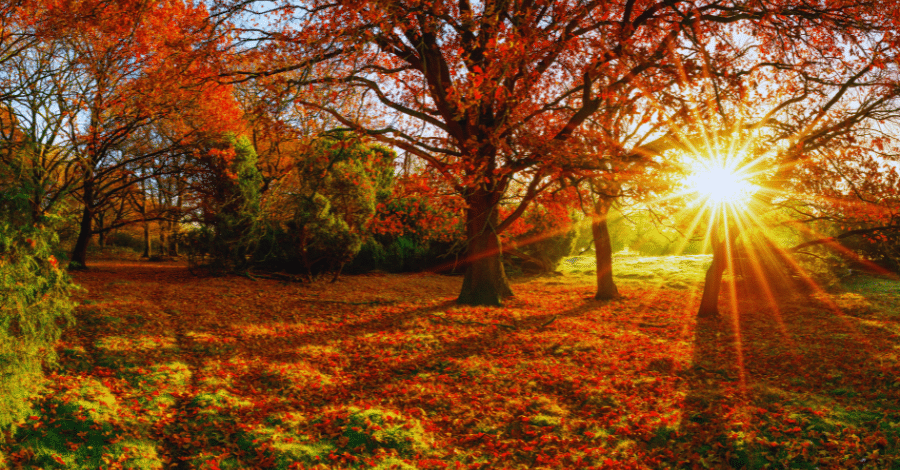Autumn foliage in Europe is a spectacular display of nature’s beauty, with diverse landscapes transformed by vibrant hues of red, orange, gold, and brown. From late September through early November, depending on the location and climate, forests and countryside across the continent burst into a breathtaking palette of warm colors.
Europe’s fall color viewing spots range from the misty Scottish Highlands to the sun-dappled vineyards of France’s Loire Valley, and from the dense Black Forest in Germany to the picturesque lakes of Italy and Slovenia. Each region offers its unique charm, whether it’s the backdrop of medieval castles, alpine peaks, or serene lakes reflecting the colorful canopy.
Are you ready to discover these magical places? Here are our top 10 favorite spots in Europe for fall color peeking:
1. Plitvice Lakes National Park, Central Croatia
This UNESCO World Heritage site is renowned for its cascading lakes and waterfalls set against a backdrop of lush forests. The park’s diverse vegetation includes beech, fir, spruce, and various maple species, creating a vibrant autumn palette of golds, oranges, and reds.
Covering about 300 square kilometers, the park features a mix of terrain, from relatively flat lakeshores to steep, forested hillsides and limestone canyons.
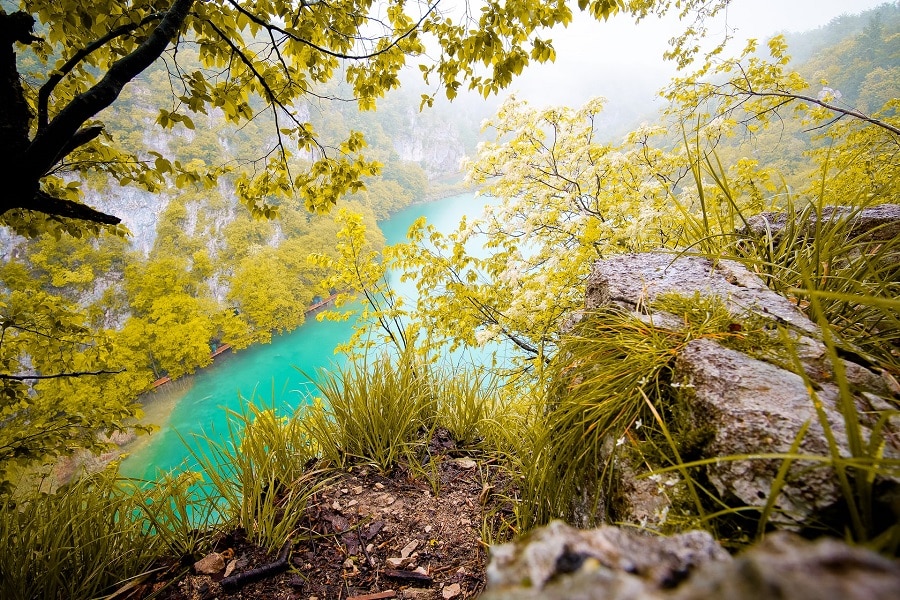
To reach Plitvice, you can take a bus from major Croatian cities or drive. The park is about 130 km from Zagreb. Peak fall colors typically occur from late September to mid-October.
The color change begins in early September and can last until early November, depending on weather conditions. Average temperatures in September range from 9-19°C (48-66°F), October 5-14°C (41-57°F), and November 2-8°C (36-46°F).
2. Black Forest, Southwestern Germany
The Black Forest, or Schwarzwald, is famous for its dense, evergreen forests interspersed with deciduous trees. This mix creates a striking contrast in autumn, with dark green conifers backdrop for the vibrant yellows, oranges, and deep reds of maple, beech, and oak trees.
The region covers about 6,000 square kilometers and features a varied landscape of rolling hills, deep valleys, and mountains, with the highest peak, Feldberg, reaching 1,493 meters.
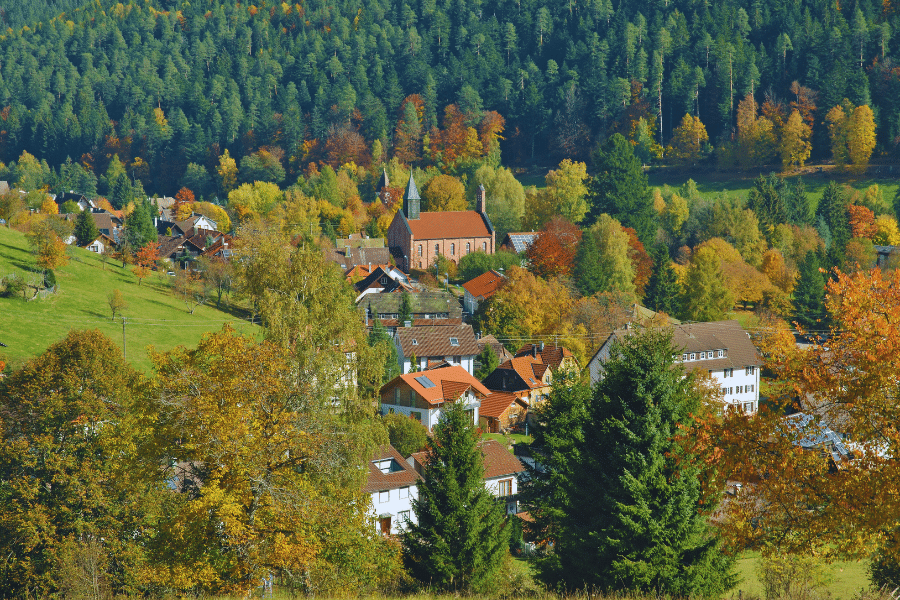
The area is easily accessible by car or train from major German cities. Frankfurt and Stuttgart are the nearest major airports. The best time to see fall colors is typically from late September to mid-October.
The color change begins in early September and can last until early November. Average temperatures in September are 11-20°C (52-68°F), October 7-14°C (45-57°F), and November 2-7°C (36-45°F).
3. Scottish Highlands, Northern Scotland UK
The Scottish Highlands offer a unique autumn landscape, with heather-covered moors, ancient Caledonian pine forests, and deciduous woodlands. The mix of rowan, oak, birch, and beech trees creates a rich tapestry of reds, golds, and purples against the backdrop of rugged mountains and serene lochs.
The Highlands cover a vast area of about 30,000 square kilometers, characterized by dramatic, mountainous terrain with deep glens and numerous lakes.
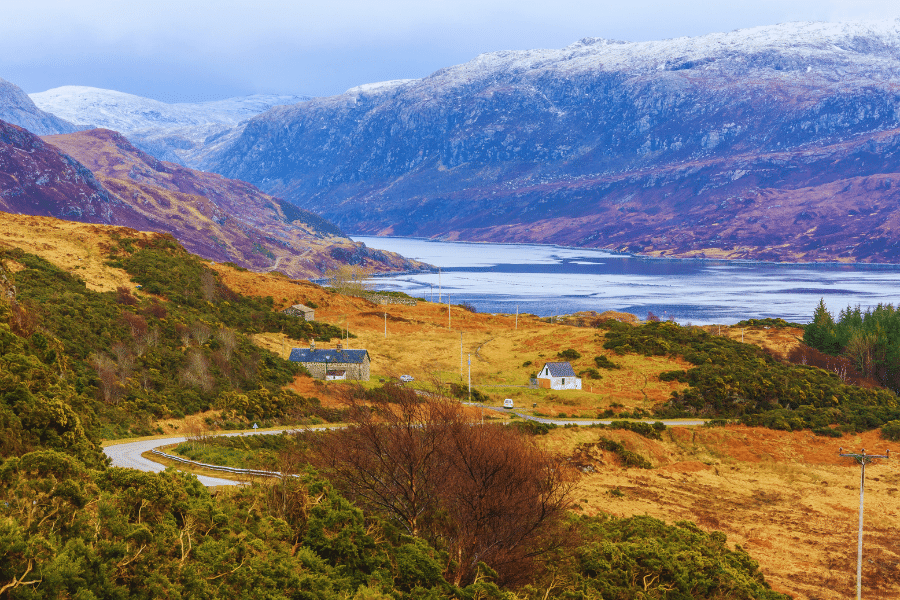
You can reach the Highlands by car, train, or bus from major Scottish cities like Edinburgh or Glasgow. Inverness Airport also serves the region. The peak of fall colors usually occurs from late September to mid-October. The transformation begins in early September and can extend into early November.
Average temperatures in September are 7-16°C (45-61°F), October 5-12°C (41-54°F), and November 2-8°C (36-46°F).
4. Loire Valley, Central France, along the Loire River
The Loire Valley, known as the “Garden of France,” offers a unique autumn experience with its mix of vineyards, orchards, and forests set against a backdrop of historic châteaux.
The region’s diverse vegetation, including oak, chestnut, and maple trees, creates a warm palette of yellows, oranges, and reds. The area covers about 800 square kilometers of mostly gentle, rolling terrain following the course of the Loire River.
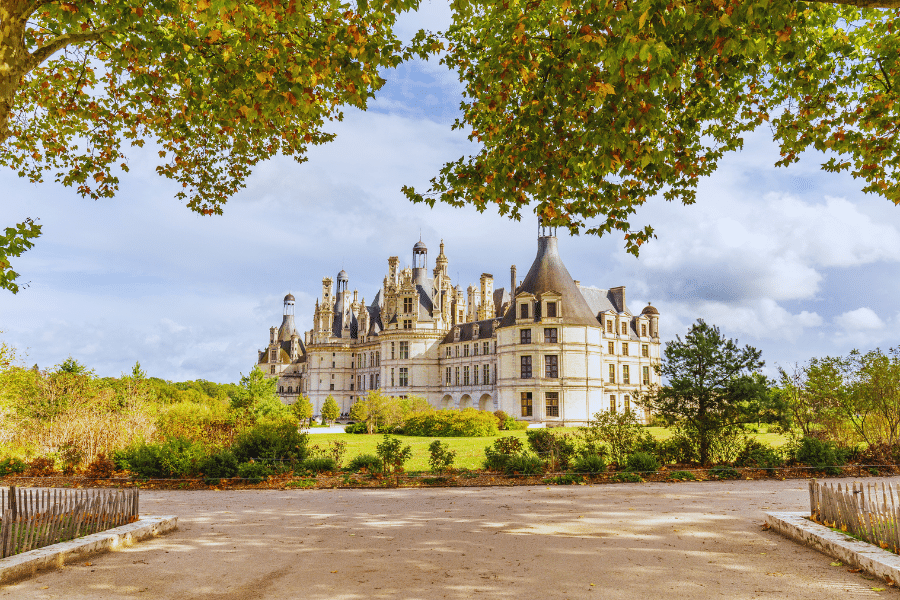
The valley is easily accessible by train from Paris (about 1 hour to Tours) or by car. The best time to see fall colors is typically from early October to early November.
The tree leaves start turning in late September and can last until mid-November. Average temperatures in September are 11-21°C (52-70°F), October 8-16°C (46-61°F), and November 5-11°C (41-52°F).
5. Bohemian Switzerland National Park, Northwestern Czech Republic
Bohemian Switzerland National Park is renowned for its unique landscape of towering sandstone formations, deep ravines, and dense forests. The park’s diverse vegetation includes a mix of deciduous and coniferous trees, creating a stunning autumn palette. Beech trees dominate, offering golden and copper hues, while maples provide splashes of vibrant reds and oranges.
Birch trees add their characteristic bright yellow, contrasting beautifully with the evergreen pines and the park’s iconic sandstone pillars and arches. Covering an area of about 79 square kilometers, the park features a varied terrain of steep cliffs, deep gorges, and plateaus, with elevation ranging from 115 to 619 meters above sea level.
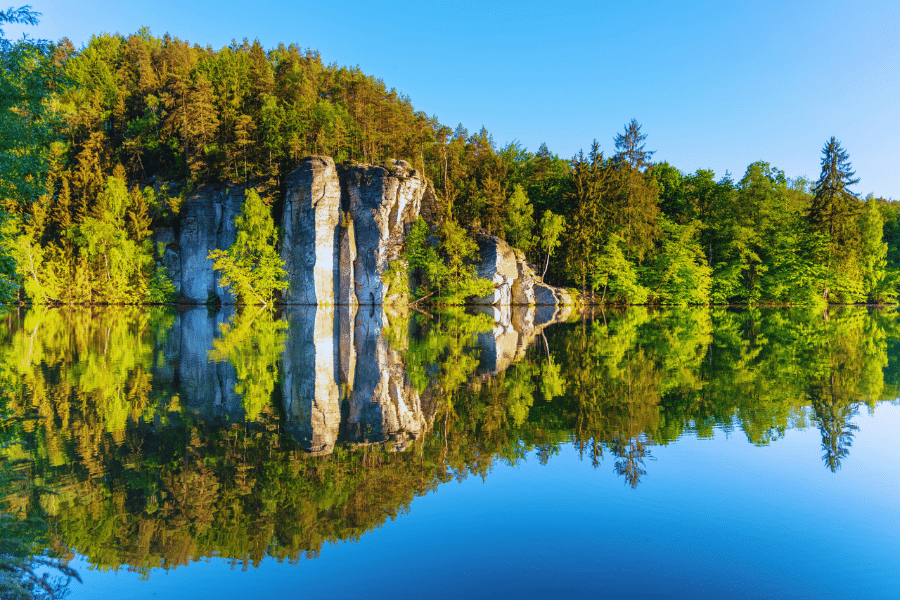
The park is easily accessible from Prague, about 130 km away. You can reach it by car (about 2 hours drive) or take a train to Děčín and then a local bus to the park. The nearest major airport is in Prague. The best time to see fall colors is typically from late September to mid-October.
The color begins changing in early September and can last until early November, depending on weather conditions. Average temperatures in September range from 9-18°C (48-64°F), October 5-12°C (41-54°F), and November 1-6°C (34-43°F). It’s worth noting that the park’s varied elevation can cause slight temperature differences within its boundaries, with higher areas generally being cooler.
6. Saxon Switzerland National Park, Eastern Germany, near the Czech border
Saxon Switzerland National Park is known for its unique sandstone formations, deep valleys, and table mountains, creating a dramatic backdrop for autumn colors.
The park’s forests consist mainly of beech, oak, and maple trees, interspersed with pines, offering a mix of golden yellows, warm oranges, and some reds. Covering about 93 square kilometers, the park features a rugged, mountainous terrain with steep cliffs, deep gorges, and plateaus.
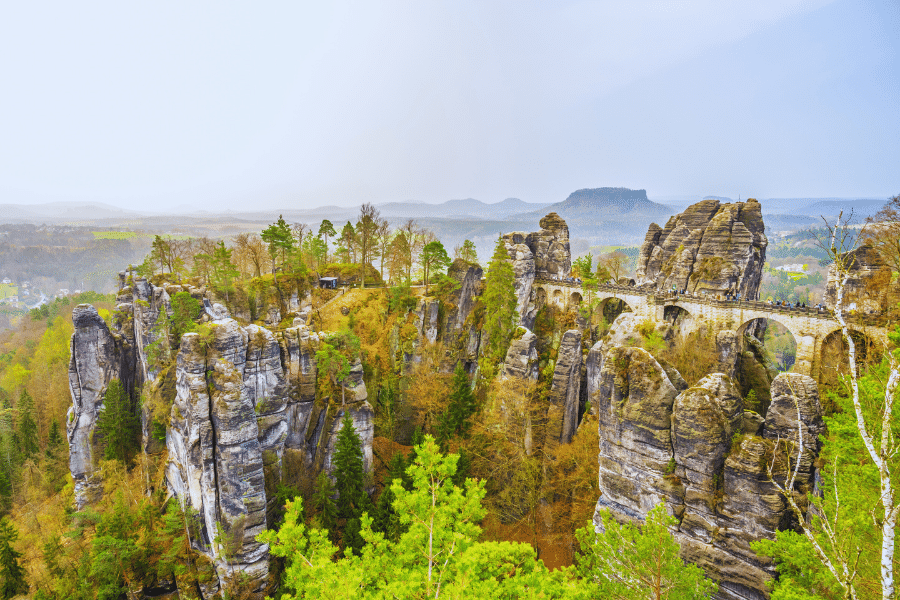
The park is easily accessible from Dresden, about 30 km away. You can reach it by car or take a train to Bad Schandau. The best time to see fall colors is typically from late September to mid-October.
The fall landscapes start changing color in early September and can last until early November. Average temperatures in September are 10-19°C (50-66°F), October 6-13°C (43-55°F), and November 2-7°C (36-45°F).
7. Lake Bled, Northwestern Slovenia
Lake Bled offers a picturesque autumn setting with its emerald-green waters, island church, and medieval castle set against a backdrop of the Julian Alps. The surrounding forests consist of beech, maple, and chestnut trees, creating a vibrant display of yellows, oranges, and reds reflected in the lake’s surface.
The area around the lake is relatively small, about 2 square kilometers, with gently rolling hills surrounding the lake and more mountainous terrain in the distance.
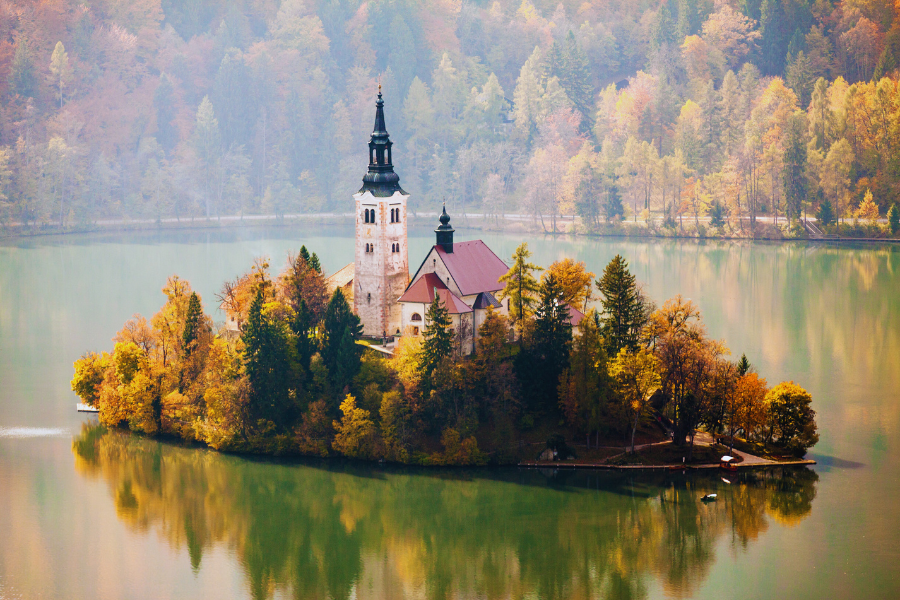
Lake Bled is about 55 km northwest of Ljubljana and can be reached by car or bus. The nearest airport is Ljubljana Jože Pučnik Airport. Peak fall colors typically occur from early to mid-October.
The autumn colors are at their best in late September and can last until early November. Average temperatures in September are 10-20°C (50-68°F), October 6-14°C (43-57°F), and November 2-8°C (36-46°F).
8. Transylvania, Northwest Central Romania
Transylvania offers a diverse autumn landscape, from the forested Carpathian Mountains to rolling hills dotted with medieval villages. The region’s forests are primarily composed of beech, oak, and maple trees, creating a rich tapestry of reds, oranges, and golds.
Transylvania covers a large area of about 100,000 square kilometers, featuring a mix of mountainous terrain, plateaus, and valleys.
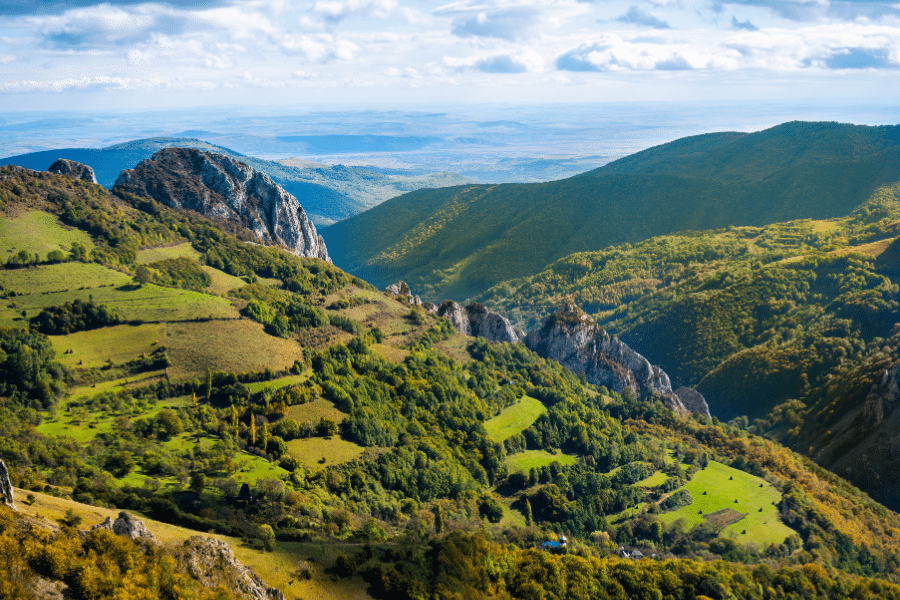
You can reach Transylvania by flying into Cluj-Napoca or Sibiu airports, or by train or car from Bucharest. The best time to see fall colors is typically from late September to mid-October.
The color change usually starts in mid-September and can last until early November. Average temperatures in September are 11-22°C (52-72°F), October 6-16°C (43-61°F), and November 1-8°C (34-46°F).
9. Ardennes Forest, Southeastern Belgium, extending into Luxembourg and France
The Ardennes Forest is known for its dense woodlands, rolling hills, and picturesque river valleys. The forest is primarily composed of oak, beech, and maple trees, offering a stunning display of deep reds, bright oranges, and golden yellows in autumn.
Covering about 11,200 square kilometers, the Ardennes feature a mix of terrain, from gentle hills to steep river valleys and plateaus.
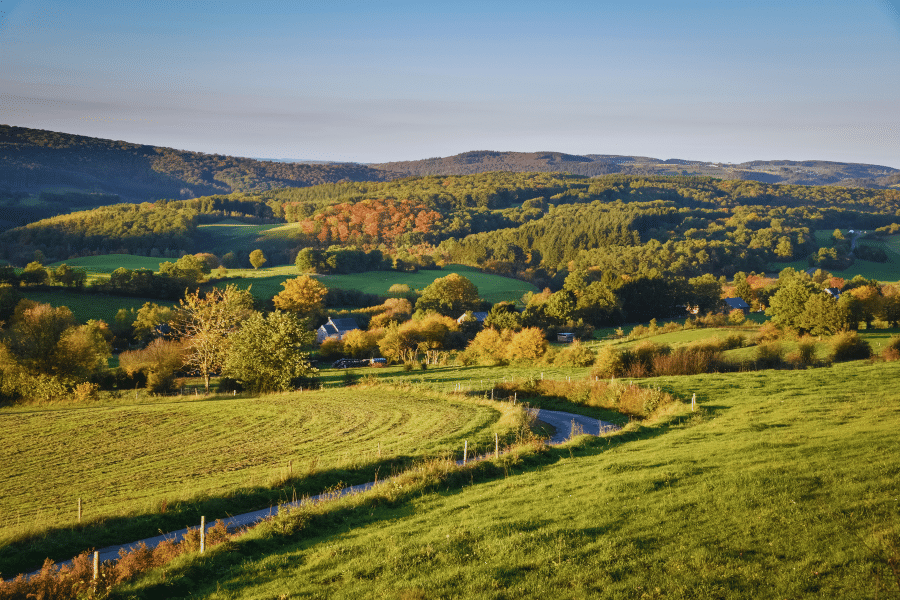
The Ardennes is easily accessible by car from Brussels (about 1.5 hours to the heart of the forest) or by train to cities like Namur or Liège. Peak fall colors typically occur from early to mid-October.
The color change begins in late September and can last until early November. Average temperatures in September are 10-19°C (50-66°F), October 7-14°C (45-57°F), and November 3-8°C (37-46°F).
10. Lake Como, Northern Italy, near the Swiss border
Lake Como offers a unique autumn experience with its deep blue waters surrounded by forested mountains and dotted with charming villages. The surrounding hills are covered with chestnut, beech, and maple trees, creating a warm palette of yellows, oranges, and reds that contrast beautifully with the lake and the snow-capped Alps in the distance.
The lake covers about 146 square kilometers, with steep, mountainous terrain surrounding it.
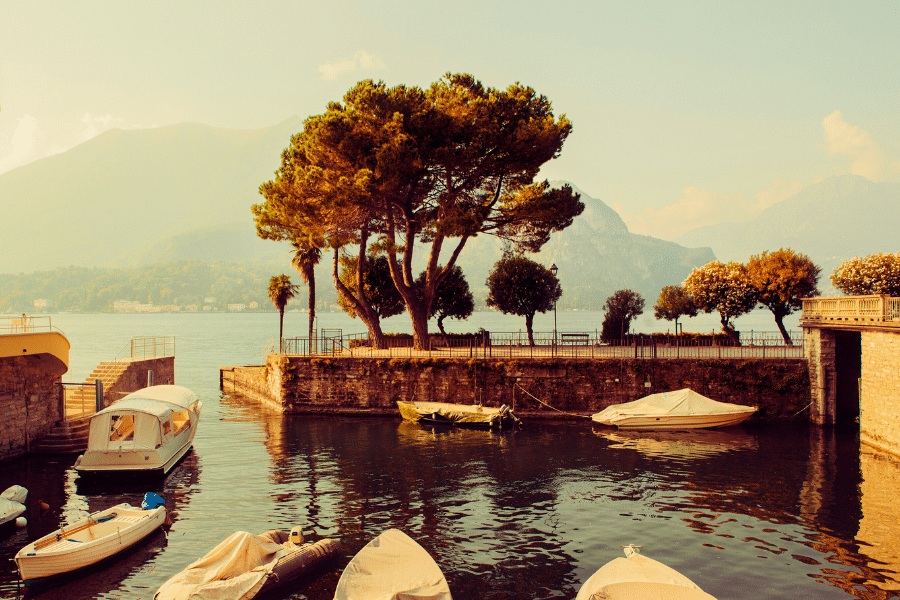
Lake Como is easily accessible from Milan, about 85 km away. You can reach it by car or train. The nearest airport is Milan Malpensa. The best time to see fall colors is typically from mid-October to early November.
The the best fall scenery begins in early October and can last until mid-November. Average temperatures in September are 15-24°C (59-75°F), October 11-18°C (52-64°F), and November 6-12°C (43-54°F).

